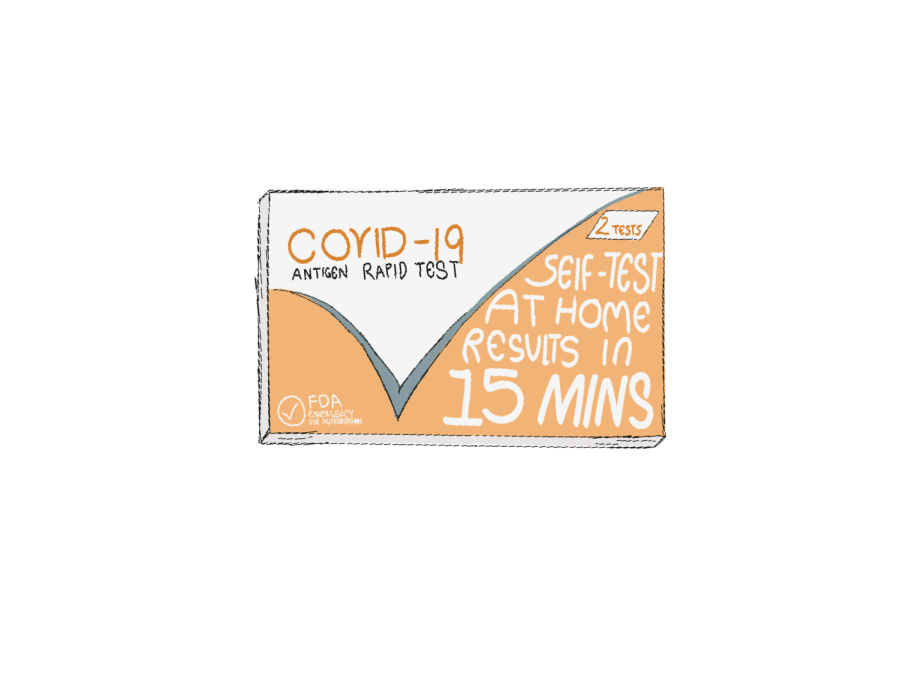Editorial: Test Tam High
Mar 3, 2022
As the Omicron variant surges through the county, the Tamalpais Union High School District (TUHSD), Tam administration, and students need to take further action to prevent more illness, hospitalizations, and death. While precautions taken by TUHSD thus far have been a step in the right direction, such as requiring surgical or KN95 masks and having infected students attend school via Zoom, the district should take further strides surrounding testing.
Easy access to rapid at-home testing has been proven to be an effective way to slow the spread of COVID-19 while keeping students on campus. A June 2021 study by the University of Illinois at Urbana-Champaign showed that using rapid at-home testing three or more times per week is just as effective as Polymerase Chain Reaction (PCR) lab testing. Rapid at-home antigen tests should be utilized on a large scale as a public health tool, one that would be especially useful in, say, a school environment. If frequent rapid antigen tests are comparable to weekly PCR lab tests, then it is reasonable to assume a similar low positivity rate can be achieved by the TUHSD through adopting a comprehensive testing program.
This is further bolstered by data shared on Jan. 7 regarding the results of the district’s tests distributed before winter break. Of the 90 percent of reported test results from the 5,039 students in the district, 263 people reported positive tests, meaning even a short-lived testing program helped prevent 263 infected students from returning to school and potentially spreading the virus at Tam.
While students should still get immunized against COVID-19, wear proper masks, and stay away from large gatherings, at-home tests are a unique tool against COVID-19, especially when new variants arise. They are easy to self-administer, provide quick results, confirm infection to students who have been exposed or are symptomatic, or ensure the safety of those who are not. If the district would administer two free COVID-19 tests every week to every student, similar to the ones handed out before winter break, then students who are asymptomatic would catch their infection and prevent spreading it, and those who believe they just have a cold would have access to easy testing to ensure they don’t have COVID-19.
At-home tests are expensive to obtain commercially. Many students’ families cannot afford to seek out and buy them constantly; therefore, the school should be the provider of tests as they keep campuses open and increase the risk of contracting COVID-19. Nevertheless, students need to step up as well. If you are sick or have been exposed, don’t avoid taking a test because you would “rather not know.” Test; if you are positive, stay home and utilize the Zoom-in option for quarantined students.
If the proposition of two free weekly tests for every student seems drastic, it’s because it is. What’s also drastic is a strain of an already deadly and novel virus that is measurably more infectious than the Delta variant. We cannot take marginal steps to ensure the safety of students; extensive public health measures are the only appropriate response. In fact, in recent weeks, the utilization of at-home testing for public schools has been adopted by many states and districts: On Jan. 18, Massachusetts announced that primary and secondary schools in the state can opt into providing free once-weekly at-home tests for their students and staff. The state purchased 26 million tests to carry out this program, showing the feasibility, political will, and timeliness required of a successful testing program.
By requiring students to test frequently, the school and larger community would be able to prevent a cluster of cases, hospitalizations, and even deaths. The monetary price and effort are worth every penny if it means keeping our community safe while having students on campus.




